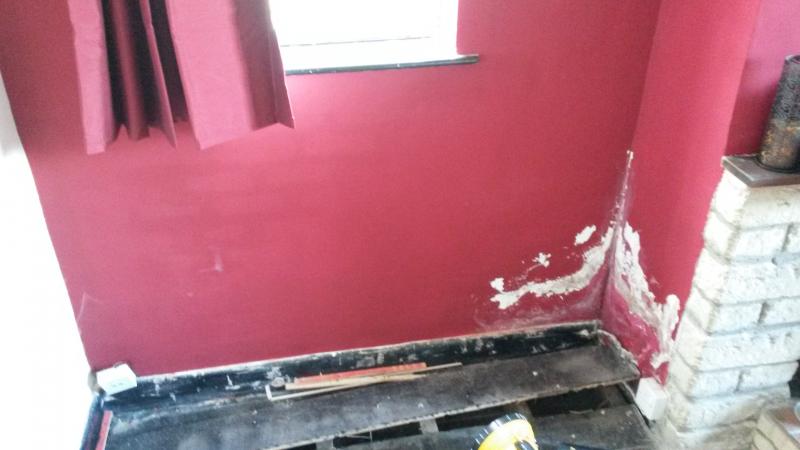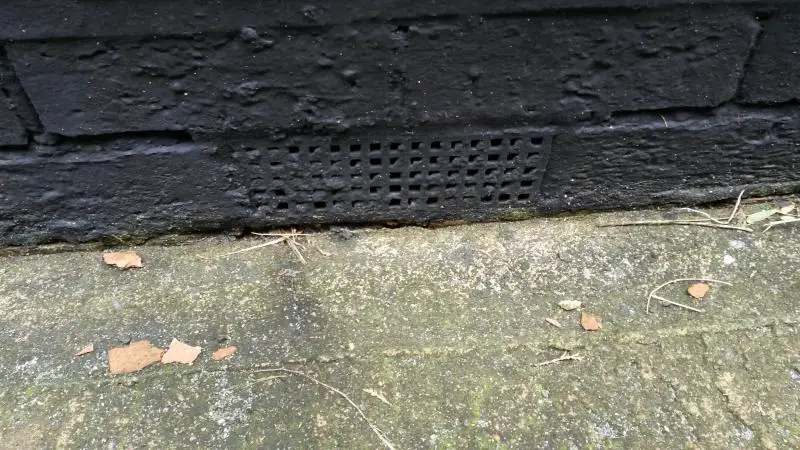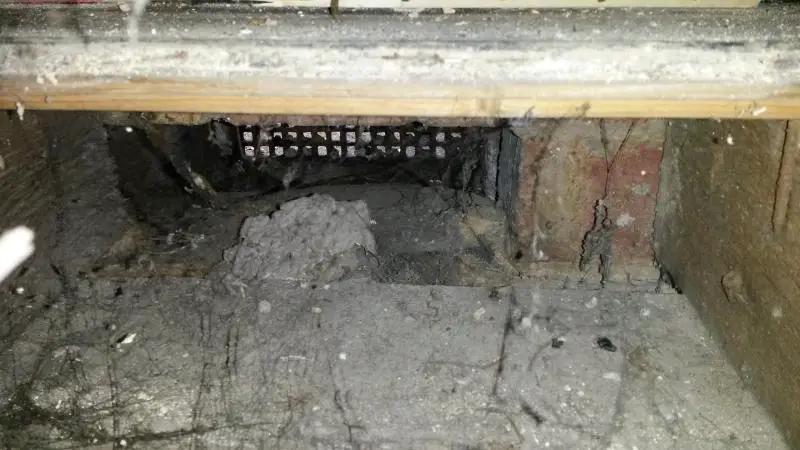- Joined
- 9 May 2004
- Messages
- 128
- Reaction score
- 5
- Country

Hi all,
I have damp on my dining room wall. The paint is peeling off and the plaster is soft to touch.
The house was built in 1930 and the wall is a cavity wall which is currently not filled. I'd like to get the cavity insulated but clearly must resolve the damp issue first. The right hand wall that can be seen in the photo is a chimney breast and there is a tiny amount of similar damp on the opposite side of the chimney breast also (but barely noticeable).
Outside, the wall is South-facing with a narrow alley way to the back yard. There is an air brick right underneath the centre of the window and I believe that this may be the cause. As you can see in the photo below, the concrete pathway outside has been laid right up to the level of the bottom of the air brick so any standing water is almost certainly entering the floor void through the air brick.
I've lifted a floorboard and there are no obvious signs of damp, but wanted to get your views in case I've missed something obvious and what the best way might be to resolve this.
I'm thinking that cutting a channel alongside the wall and installing a linear drain would be the first thing to do. Is there anything else that I should do?
Cheers,
Nick
I have damp on my dining room wall. The paint is peeling off and the plaster is soft to touch.
The house was built in 1930 and the wall is a cavity wall which is currently not filled. I'd like to get the cavity insulated but clearly must resolve the damp issue first. The right hand wall that can be seen in the photo is a chimney breast and there is a tiny amount of similar damp on the opposite side of the chimney breast also (but barely noticeable).
Outside, the wall is South-facing with a narrow alley way to the back yard. There is an air brick right underneath the centre of the window and I believe that this may be the cause. As you can see in the photo below, the concrete pathway outside has been laid right up to the level of the bottom of the air brick so any standing water is almost certainly entering the floor void through the air brick.
I've lifted a floorboard and there are no obvious signs of damp, but wanted to get your views in case I've missed something obvious and what the best way might be to resolve this.
I'm thinking that cutting a channel alongside the wall and installing a linear drain would be the first thing to do. Is there anything else that I should do?
Cheers,
Nick



